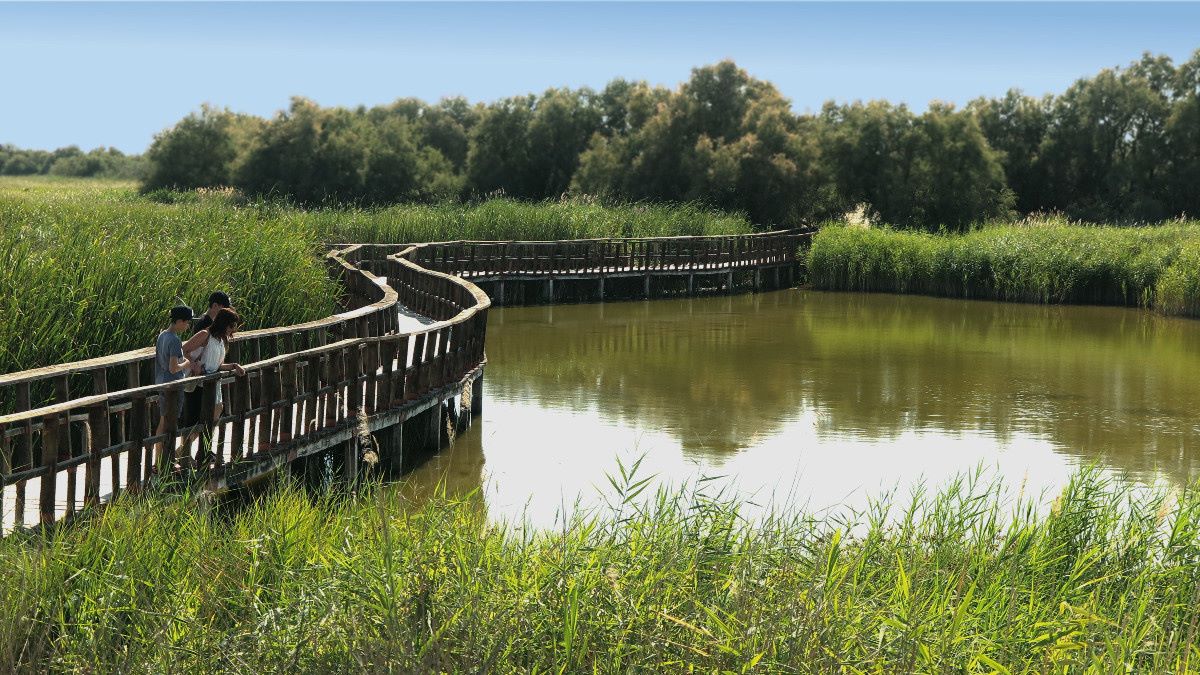Las Daimiel Tables are a virtually unique wetland in Europe and the last representative of the ecosystem called river tablesonce characteristic of the central plain of our peninsula.
It’s a Complex ecosystem that mixes the characteristics of a flood plain, produced by the overflows of the Guadiana and Gigüela rivers at their confluencewith that of a groundwater discharge area from a large aquifer.
These overflows, favored by the scarcity of slope in the field, they carry the development of a powerful and characteristic vegetation which constitutes an exceptional habitat for all fauna linked to the aquatic environment.
With the statement From Las Tablas de Daimiel National Park, a great step was taken in the conservation of one of the most valuable ecosystems in La Mancha, thus ensuring the survival of the avifauna that uses these areas as a wintering, mancada and nesting area, creating an integral area of aquatic birds.
Under Great pressures due to droughts, overexploitation and illegal extractions, the wetland driesalthough the last rains have given him an important respite. The problem is that what should change is water management and care, otherwise, this ‘help’ will not help.
Daimiel’s National Park
He Daimiel National Park (Ciudad Real), has reached 1,130 flooded after the rains and the activation of emergency wells, which means almost 66 percent of its surface.
This has been released in a statement, the Minister of Sustainable Development, Mercedes Gómez, who visited this protected space on Monday and where he recalled that It would be necessary to go to 2018 to see a similar flood of Las Tablas de Daimiel National Park since, last year only more than 600 hectares came to flood.
As for fauna, the presence of threatened species such as Pardo Pardo with 88 copies stands out, for which the tables are the main reproductive nucleus in Spain; or marsh. Ten specimens of Cerceta Pardilla have also been counted, which, thanks to the Ring Readings, it has been found that they are coming from Valencia and the Community of Madrid.
Besides, Las Tablas de Daimiel Park has in its facilities as four couples of players who took 32 chickens last year that were released both in their space and in the Lagunas of Alcázar de San Juan. Regarding other aquatic birds, some 1,100 copies of Colorado Duck and about 600 copies of the European Porron have passed. Most of both species are males, since females are found in the nest.
Biodiversity Restoration
As for vegetation, it stands out in the meadows of underwater plants known as ‘OVAS’ in large areas of the park and that are essential for the proper functioning of the aquatic ecosystem. In this context, the counselor has referred to the fact that in the coming weeks the regional plan of Aquatic recovery that encompasses four species of ducks; El Pardo Pardo, the Moruna Foca, the Malvasía Cabeciblanca and the Pardilla Cerceta.
Regarding habitat improvement actions, It continues with the second phase of the restoration of the itinerary of the Island of the PAN, with plantations of Masiega having introduced some 25,000 plants. It is also worth highlighting the new Visitor Center, where the architectural part of last year has been completed and its museum content is in the process of executing with the objective of its inauguration in the last quarter of 2026.
On the other hand, it has advanced that the budget assigned for aid is being approved destined for the areas of socioeconomic influence of each National Park, from the Recovery and Resilience Recovery Plan, Next Generation EUand the autonomous communities are reported from the Sector Conference. Possibly, as the counselor has indicated, they will be similar amounts to those of last year, about 310,000 euros for both of this region, 220,145 euros for Cabañeros and 90,574 euros for tables of Daimiel. EFE / ECOticias.com

